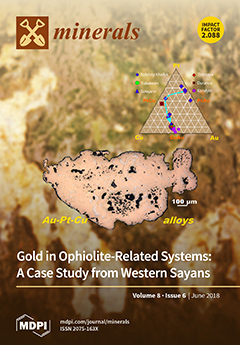Several massive colonies of
Pectinatella magnifica have been observed during the summer almost every year since 1974 in agricultural reservoir ponds and lakes with dirty freshwater environments in Ishikawa, Japan, which has posed serious environmental problems on the shores of Hokuriku District. We collected
Pectinatella magnifica during the summer at Kahokugata Lake and Makiyama agricultural reservoir pond in June and July 2016. However, scientific data for the statoblasts of
Pectinatella magnifica are limited. Our results for scanning electron microscopy equipped with energy-dispersive spectroscopy (SEM-EDS), inductively coupled plasma-mass spectrometry (ICP-MS), and X-ray powder diffraction (XRD) analyses of
Pectinatella magnifica indicated immobilization of the chemical elements that were involved in the mass during the summer. We also reported the characterization of an invasive species of bryozoan (
Pectinatella magnifica) in lakes and ponds in Ishikawa, Japan, based on field observations in 2016. We studied the microstructure, mineralogy, chemical composition, and radioactivity associated with these organisms, using a combination of micro-techniques, SEM-EDS, associated with ICP-MS, and XRD. This study aims to illustrate the capability of
Pectinatella magnifica to produce minerals within statoblasts and gelatinous material. Obtained results may indicate forming quartz, palygorskite, dolomite, bischofite, pyrolusite, and pyrite, associated with native sulfur and copper in the statoblast. The mass of gelatinous material contains talc and vermiculite as well as non-crystalline phase. The mechanism of biomineral formation has important implications for water–mineral–organism or microorganism interactions both in lower drainage basin systems, such as Kahokugata Lake, and upper water areas, such as Makiyama agricultural reservoir pond. Many types with variety of sizes and shapes of bryozoan (
Pectinatella magnifica) were found in lakes and ponds in Japan. The biomineralization systems will be made available for use not only in researching bryozoans (
Pectinatella magnifica), but also for environmental change systems from upstream to downstream of the lake. To date, there have been no reports on related electron microscopy observations, including the real-life occurrence of “bioremediation”. These observations could lead to simple methods of removing statoblasts of the invasive alien species
Pectinatella magnifica from agricultural and reservoir environments, because there was limited microbial immobilization of the ions during the winter.
Full article





